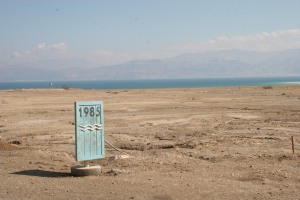
Throughout history, the land of Jordan has been renowned for its verdant vegetation and wildlife. Ancient mosaics and stone engravings show pictures of lush fields filled with exotic animals. Known in the Bible as the “land of milk and honey,” the area was also described by more recent historians and travelers as green and abundant in wildlife. During the 20th century, however, the health of Jordan’s natural habitat has declined significantly. Problems such as desertification, drought and overhunting have taken its toll on the natural landscape and will take many years to rectify.
The JordanValley, the most distinctive natural feature of the country, includes the Jordan River, the Dead Sea, and the Ghor regions. The JordanValley is an extremely important area geologically, environmentally and culturally. The valley is an important wetland habitat and flyway for over half a billion birds twice a year. It is also contains the sites of early human settlements and was the site of wild wheat’s first cultivation. The JordanValley was known as the gate to the Garden of Eden.
In the past few decades, due to the lack of access to the Jordan River, development, urbanization and industrial growth along the river bank has been limited. Thus, the authorities had the ability to divert the river’s flow from its original path with ease and little public outcry. The result of this diversion is that the flow of the Lower Jordan River has dropped by more than 95%; this is why the Dead Sea level is dropping one meter per year, sinkholes are forming along the length of its shores. If no action is taken, the Jordan River is expected to run dry soon, and with its death, the Dead Sea will also cease to exist, and the natural habitat in the vicinity will be devastated.
A proposed solution to this man-made problem is the Red-Dead Canal: a set of pipes pumping the Red Sea’s waters into the Dead Sea. Even though the Red-Dead canal would counteract the water loss of the Dead Sea, transferring massive volumes of water from one sea to another can cause drastic changes to the unique natural characteristics of the Dead Sea. This is one reason that FoEME is against the Red-DeadCanal, and supports the rehabilitation of the Jordan River, the “natural” canal to the Dead Sea.

Rehabilitation can be accomplished through water conservation and improved water efficiency. In a recent review of Jordanian, Israeli, and Palestinian water economies, FoEME identified over a billion cubic meters of water that could be saved by implementing identified conservation strategies.
The JordanValley is a natural treasure; it has been of great significance for millenniums, through the Stone Age, biblical times, the rise of Islam, and the modern era. The Jordan River and the Dead Sea must be preserved, for it would be environmentally devastating to lose these water systems, and a cultural and political shame to erase such unique and culturally important natural features.
This post was written by FoEME student intern Khaled Al Sharif. Khaled is 15 years old, and currently attends the New English School in Amman.